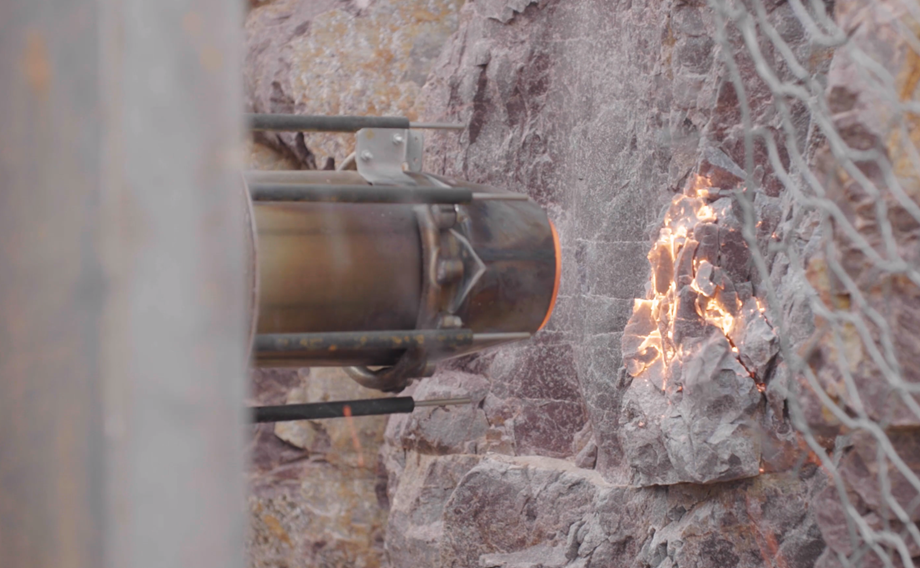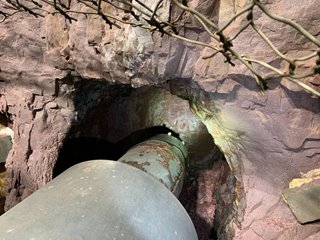Micro Tunneling Robot for Underground Power Lines
Micro Tunneling Robot for Underground Power Lines


Petra’s new micro tunneling robot “Swifty” will help power companies bury power lines for a more resilient electrical grid. Image: Petra
One of the most vulnerable parts of our electrical grid infrastructure is above-ground power lines. Most of the country’s transmission is located above ground, vulnerable to the elements. Power companies are beginning to invest heavily in underground power lines to create a more resilient electrical grid. However, power companies historically have resisted burying power lines underground because it comes at a high cost. Petra, a new underground utility company, hopes to help reduce costs by introducing robotics and automation to perform the drilling job.
The rise of extreme weather events has taken its toll on the electrical grid. Last year, Climate Central reported a 67 percent increase in weather-related power outages in the U.S. Between 2003 and 2012, 59 percent of outages were caused by heavy rains and thunderstorms, 20 percent by ice storms, and 18 percent by hurricanes and tropical storms.
The problem is only expected to get worse as climate changes continue. According to AON’s 2021 Weather, Climate, and Catastrophe Insight report, last year’s damage due to extreme weather was the worst yet. An estimated 38 billion in economic losses were associated with severe winter weather due to the Polar Vortex.
When an extreme weather event hits, above-ground power lines are typically the first to fail. According to the Edison Electric Institute, only 18 percent of the country’s electric distribution lines are buried, mainly focused on new residential and commercial buildings. In California, PG&E plans to bury 10,000 miles of power lines that are at risk of wildfires. The project comes at a high price tag of $20 billion and only covers a small portion of PG&E’s electrical system.
Recommended for You: Big Data Spurs Autonomous Tunneling
To help combat this cost, Petra has invented a new hard rock-boring robot that uses a non-contact, thermal-drilling method to bore out micro tunnels. The robot “Swifty” can melt away rock surfaces by applying heat above 1,800 degrees Fahrenheit, breaking the rock into small pieces, and then using high pressure to excavate the rock away. Swifty is semi-autonomous, operated remotely across a far distance to ensure safety for the operators. The operators can control the temperature inputs and vary the diameter size as needed.
“In the past, there have only been a handful of costly and inefficient methods for tunnel construction, starting with manual tools and evolving to the modern tunnel-boring machine,” said Petra CEO and co-founder Kim Abrams in a recent press release. “By delivering the first non-contact, boring robot that affordably undergrounds utilities through bedrock, we can protect communities around the world from exposure to wildfires and ensure the safety of critical infrastructure in disaster-prone areas.”
Petra’s robot can bore roles in varying diameters between 20 to 60 inches compared to conventional micro-tunneling machines built for single-diameter use. The robot is also capable of reverse tunneling, which allows operators to reduce maintenance costs.
Petra’s overall goal is to reduce the cost of tunneling by 50 to 80 percent so that more power lines can be buried underground. In a recent trial in Minnesota, Swifty was able to tunnel a 20-foot demonstration borehole against Sioux Quartzite, one of the hardest rock types in the world. Petra’s lab tests demonstrate that the drilling robot can bore through various rock types, including granite, basalt, gneiss, and dolostone.
You May Also Like: Boosting Electrical Grid Resilience
Petra is still a young company, but its robot concept has gained much attention. They have raised a total of $33 million in capital funding. However, according to the Energy Information Administration, energy demands are predicted to increase by 50 percent over the next 30 years. With climate change only becoming more unpredictable and severe, continued investment in our electrical infrastructure is a high priority.
Carlos M. González is special projects manager.
The rise of extreme weather events has taken its toll on the electrical grid. Last year, Climate Central reported a 67 percent increase in weather-related power outages in the U.S. Between 2003 and 2012, 59 percent of outages were caused by heavy rains and thunderstorms, 20 percent by ice storms, and 18 percent by hurricanes and tropical storms.
The problem is only expected to get worse as climate changes continue. According to AON’s 2021 Weather, Climate, and Catastrophe Insight report, last year’s damage due to extreme weather was the worst yet. An estimated 38 billion in economic losses were associated with severe winter weather due to the Polar Vortex.
When an extreme weather event hits, above-ground power lines are typically the first to fail. According to the Edison Electric Institute, only 18 percent of the country’s electric distribution lines are buried, mainly focused on new residential and commercial buildings. In California, PG&E plans to bury 10,000 miles of power lines that are at risk of wildfires. The project comes at a high price tag of $20 billion and only covers a small portion of PG&E’s electrical system.
Recommended for You: Big Data Spurs Autonomous Tunneling
To help combat this cost, Petra has invented a new hard rock-boring robot that uses a non-contact, thermal-drilling method to bore out micro tunnels. The robot “Swifty” can melt away rock surfaces by applying heat above 1,800 degrees Fahrenheit, breaking the rock into small pieces, and then using high pressure to excavate the rock away. Swifty is semi-autonomous, operated remotely across a far distance to ensure safety for the operators. The operators can control the temperature inputs and vary the diameter size as needed.
“In the past, there have only been a handful of costly and inefficient methods for tunnel construction, starting with manual tools and evolving to the modern tunnel-boring machine,” said Petra CEO and co-founder Kim Abrams in a recent press release. “By delivering the first non-contact, boring robot that affordably undergrounds utilities through bedrock, we can protect communities around the world from exposure to wildfires and ensure the safety of critical infrastructure in disaster-prone areas.”
Petra’s robot can bore roles in varying diameters between 20 to 60 inches compared to conventional micro-tunneling machines built for single-diameter use. The robot is also capable of reverse tunneling, which allows operators to reduce maintenance costs.
Petra’s overall goal is to reduce the cost of tunneling by 50 to 80 percent so that more power lines can be buried underground. In a recent trial in Minnesota, Swifty was able to tunnel a 20-foot demonstration borehole against Sioux Quartzite, one of the hardest rock types in the world. Petra’s lab tests demonstrate that the drilling robot can bore through various rock types, including granite, basalt, gneiss, and dolostone.
You May Also Like: Boosting Electrical Grid Resilience
Petra is still a young company, but its robot concept has gained much attention. They have raised a total of $33 million in capital funding. However, according to the Energy Information Administration, energy demands are predicted to increase by 50 percent over the next 30 years. With climate change only becoming more unpredictable and severe, continued investment in our electrical infrastructure is a high priority.
Carlos M. González is special projects manager.




